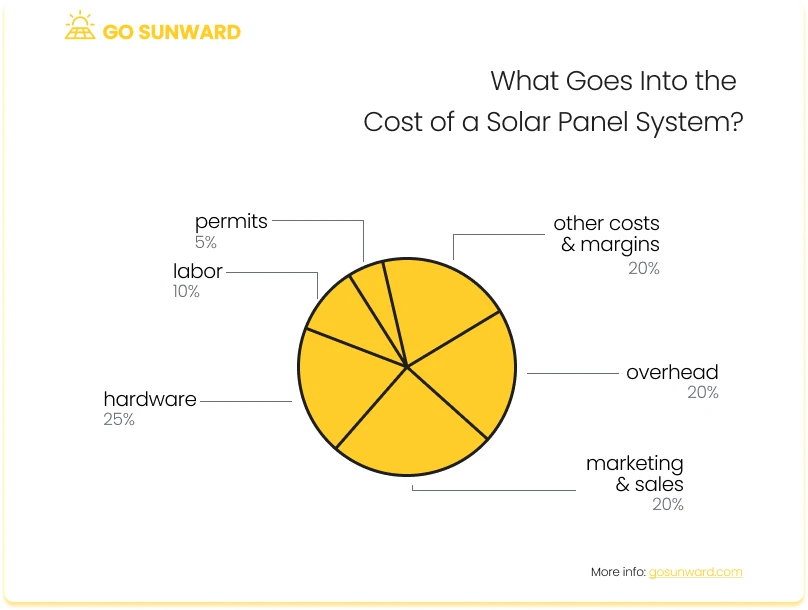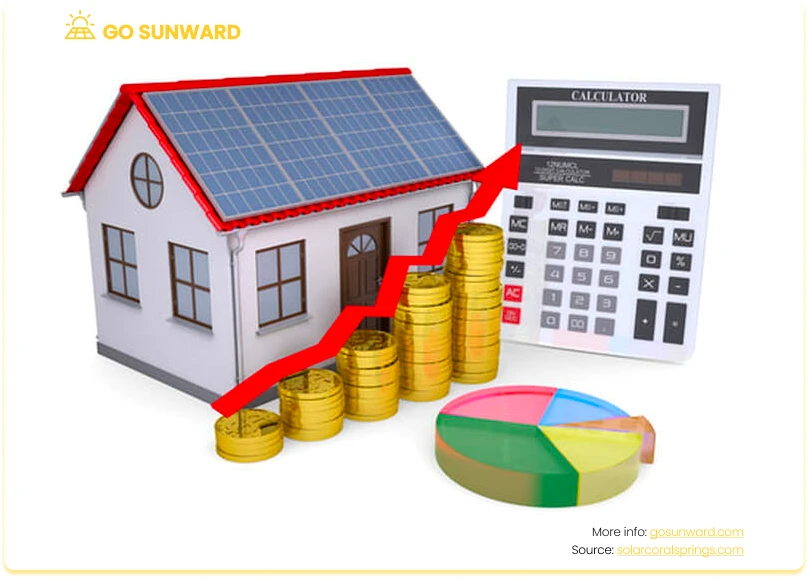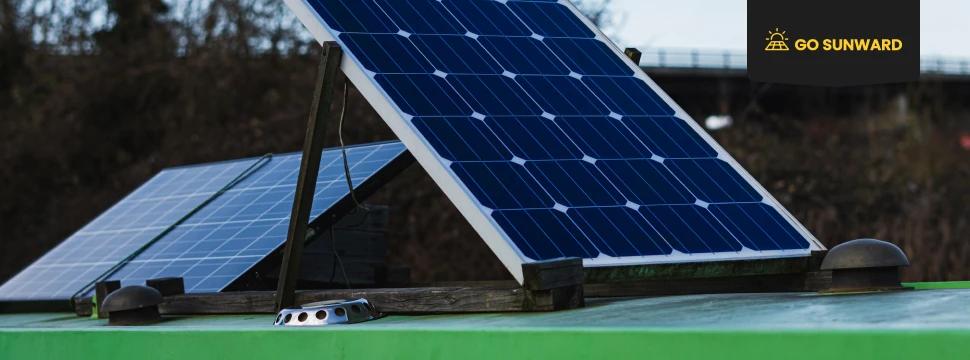Do People Really Save Money On Solar Panels?
In recent years, the adoption of solar panels has surged as homeowners seek to reduce their carbon footprint and lower their energy bills. The promise of renewable energy and potential cost savings has led many to invest in solar panels for their homes. However, the question remains: Do people really save money on solar panels? This article delves into the details of solar panel economics, exploring the factors contributing to solar energy savings and addressing common misconceptions.
Understanding The Initial Investment
The first and most substantial cost associated with solar panels is the initial investment. Solar panel systems vary in size, complexity, and quality, leading to different upfront costs. To accurately assess potential savings, homeowners must consider factors such as system size, location, local energy rates and available incentives. Furthermore, additional costs like installation, labor costs, permitting and extra components like inverters and batteries, all need to be taken into consideration. For more information on the individual factors that impact panel cost, click here.

It’s crucial to remember that while the initial investment can be big, it’s a long-term investment with the potential for substantial return on investment, given that solar panels have a lifespan of an average 25 years to 30 years or even longer. During this time, they continue to generate electricity.
Based on data currently available, a single solar panel typically ranges from $150 to $350 in the United States. In terms of an entire residential solar panel system, it’s worth noting that a typical system may range from approximately $15,000 to $25,000, before any application of incentives, rebates and net metering schemes.
Federal & State Incentives To Help Save On Solar
One of the primary drivers behind the adoption of solar panels is the availability of government incentives. Federal tax credits and state-level rebates can significantly reduce the cost of installing a solar panel system, so its worth getting to grips with the options available to you.
The Federal Investment Tax Credit (ITC) allows homeowners to deduct a percentage of the cost of their solar panel system from their federal taxes. It’s important to check for the most current ITC rate, as it may change over time. The ITC can significantly reduce the upfront cost of solar panels and enhance the financial feasibility of the project
In addition to federal incentives, many states offer their own incentives to promote solar energy adoption. These incentives can vary widely by state and may include:
- Solar rebates: Some states provide cash rebates for installing solar panels, reducing the initial investment
- Performance-based incentives: Homeowners may receive payments based on the electricity their solar panels generate, encouraging the production of clean energy.
- Property tax incentives: Certain states exempt the added value of solar panels from property tax assessments, reducing long-term costs
- Sales tax exemptions: Some states waive sales tax on solar equipment purchases, further lowering the upfront cost.
Beyond federal and state incentives, there may be additional local programs, utility rebates, or community initiatives that can further enhance the benefits of going solar. These programs can include low-interest loans, energy efficiency incentives, and community solar initiatives that allow homeowners to access solar power without installing panels on their own properties.
Monthly Savings On Your Energy Bills
The most tangible way people save money with solar panels is through reduced monthly energy bills. Solar panels generate electricity from the sun, which offsets the electricity homeowners would typically purchase from the grid.

Can People Really Save Money On Solar Panels? How to Calculate Monthly Energy Savings:
To estimate your monthly energy savings from solar panels, you can follow these steps:
Step 1: Gather Necessary Information
Collect the following information:
- Your solar panel system’s electricity generation capacity (in kilowatts, kW). You can obtain this from your solar installer or system specifications.
- Your historical electricity bills to determine your average monthly electricity consumption (in kilowatt-hours, kWh).
Step 2: Determine Your Solar Energy Production
Multiply your solar panel system’s capacity (in kW) by the average number of daily sunlight hours in your area. You can find this information from reliable sources like the National Renewable Energy Laboratory (NREL) or your local weather service.
For example, if your solar panel system has a capacity of 5 kW and you receive an average of 5 hours of sunlight per day, your daily solar energy production would be 25 kWh (5 kW x 5 hours).
Step 3: Calculate Your Monthly Solar Energy Production
Multiply your daily solar energy production by the number of days in the month you want to calculate. Assuming 30 days in a month, your monthly solar energy production would be 750 kWh (25 kWh x 30 days).
Step 4: Determine Your Monthly Electricity Savings
Subtract your monthly solar energy production (from Step 3) from your average monthly electricity consumption (from Step 1). This will give you the amount of electricity you’re saving each month.
For example, if your average monthly electricity consumption is 900 kWh and your monthly solar energy production is 750 kWh, your monthly electricity savings would be 150 kWh (900 kWh – 750 kWh).
Step 5: Calculate Your Monthly Energy Savings
Multiply your monthly electricity savings (from Step 4) by your electricity rate (in dollars per kWh) to calculate your monthly energy savings.
For instance, if your electricity rate is $0.12 per kWh and you saved 150 kWh, your monthly energy savings would be $18 (150 kWh x $0.12).
Step 6: Consider Additional Savings Factors
If your area offers net metering or other incentives for solar energy production, make sure to account for any credits or compensation you receive for excess energy generation. This can further reduce your energy bills and increase your savings.
Step 7: Monitor and Adjust
Keep track of your monthly energy savings and monitor your system’s performance. If you notice any issues or changes in your consumption patterns, consider adjusting your energy usage or system settings accordingly.
Extra Costs To Consider Going Forward
There are also operational costs that come into play over the lifespan of a solar panel system. It is important to consider these extra costs when looking at installing panels at your home.
One of the primary ongoing costs to consider is maintenance. Solar panels are designed to withstand various weather conditions, but they are not entirely maintenance-free. Over time, dust, pollen, leaves, and other debris can accumulate on the surface of the panels, reducing their efficiency. Regular cleaning and inspection are essential to ensure your panels perform at their best. While you can clean the panels yourself, some homeowners opt for professional cleaning services, which may incur additional costs.
Additionally, scheduled inspections by solar professionals are crucial. These inspections help identify any potential issues, such as loose connections, damaged panels, or wiring problems, before they escalate into more significant and costly repairs. Addressing these issues promptly can save you money in the long run and ensure that your solar panel system continues to produce electricity efficiently.
Another aspect to budget for is the eventual replacement of the inverter. Inverters are essential components of a solar panel system, responsible for converting the direct current (DC) electricity generated by the panels into alternating current (AC) electricity usable in your home or business. Inverters typically have a lifespan of around 10 to 15 years. When your inverter nears the end of its life, you’ll need to budget for its replacement to maintain the functionality of your solar system.
Investing in a monitoring system is another consideration. While not mandatory, monitoring systems provide real-time data on your solar panel system’s performance. They can alert you to issues such as reduced output due to shading or technical malfunctions. Some monitoring systems come with subscription fees or initial setup costs, which should be factored into your ongoing expenses.
Furthermore, exploring insurance options for your solar panel system is advisable. While solar panels are durable, unexpected events like severe weather, theft, or accidents can damage them. Insurance coverage can protect your investment in such circumstances, though it does involve ongoing premium costs.
Environmental Benefits
In addition to financial savings, solar panels offer significant environmental benefits. Solar power is a key player in the collective effort towards a sustainable energy future and reducing our carbon footprint. It’s a critical step in addressing climate change and responsible environmental stewardship. Solar energy, being renewable, significantly reduces harmful greenhouse gas emissions, leading to better air quality, reduced water usage, and potential land conservation.
One of the most compelling benefits of solar power is its carbon-free nature. Unlike fossil fuels, solar energy generates electricity or heat without emitting greenhouse gases, making it a crucial tool in the fight against climate change, alongside wind and nuclear power.
Solar panel adoption offers individuals, businesses, and policymakers a potent way to reduce their reliance on fossil fuels and offset energy consumption. As solar energy use grows, the dependence on fossil fuels diminishes, resulting in substantially reduced CO2 emissions and contributing significantly to global climate change mitigation efforts.
Common Misconceptions
There are several common misconceptions and myths surrounding the topic: Do people really save money on solar panels?. Addressing these misconceptions is essential for providing clarity and encouraging informed decisions among potential investors in solar energy.
Solar Panel Efficiency Myths:
Misconception: Some believe that solar panels are inefficient and can not generate enough electricity to meet their needs.
Reality: Solar panel efficiency has improved significantly in recent years. Modern panels can efficiently convert sunlight into electricity, often exceeding homeowners’ needs, and any excess energy can be stored or fed back into the grid for credit.
Weather Dependency Misconception:
Misconception: Many think that solar panels only work well in sunny climates and won’t be effective in areas with frequent cloud cover or rain.
Reality: While solar panels perform optimally in sunny conditions, they can still generate power on cloudy days and during rain. Solar systems are designed to capture diffuse sunlight, ensuring some level of electricity generation even in less-than-ideal weather.
High Costs Misconception:
Misconception: Some believe that solar panel installation is prohibitively expensive.
Reality: While there are upfront costs, solar panel prices have decreased over the years, and various incentives, tax credits, and financing options are available to make solar energy more affordable.
Long Payback Period Misconception:
Misconception: People may think that it takes too long to recoup the initial investment in solar panels.
Reality: Payback periods for solar panel systems have become shorter due to falling costs and increased energy savings. In many cases, homeowners can see financial returns within a few years.
Aesthetic Concerns Misconception:
Misconception: People may worry that solar panels will detract from the aesthetics of their family home.
Reality: Solar panel designs have evolved, offering options that blend seamlessly with various architectural styles. They can even enhance a property’s value and visual appeal. Click here for more information on the different types of panels on the market today.
Resale Value Misconception:
Misconception: Some fear that installing solar panels may reduce the resale value of their homes.
Reality: Our research suggests that solar panels often increase property resale value, making homes more attractive to eco-conscious buyers.
Conclusion
In conclusion, the question of whether people really save money on solar panels is multifaceted. While the initial investment can be substantial, various factors, including incentives, reduced energy bills, net metering, and long-term savings, contribute to the overall financial benefits of solar panel installation.
Moreover, the environmental advantages further solidify the appeal of solar panels as a sustainable and cost-effective energy solution. By understanding the economics and dispelling misconceptions, homeowners can make informed decisions about adopting solar.




